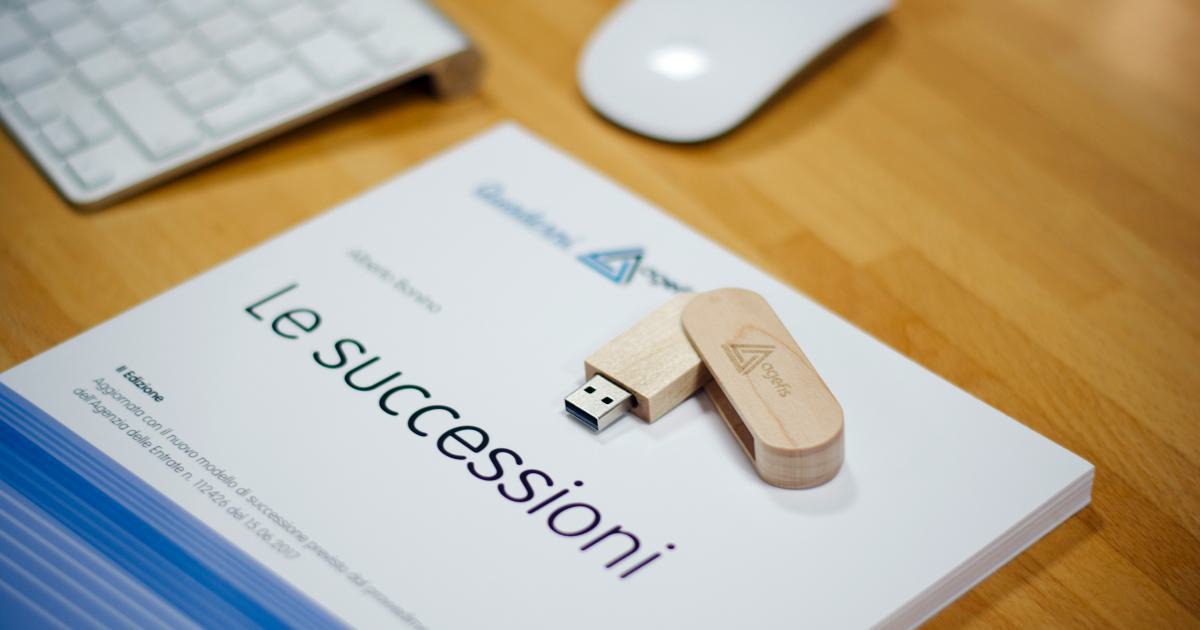The Power of Influencers: Leveraging Influencer Marketing Strategies


Understanding the Rise of Influencer Marketing
In today's digital landscape, the role of influencers has become increasingly significant in shaping consumer behavior and driving brand awareness. As traditional advertising methods struggle to capture the attention of the modern, tech-savvy audience, businesses are turning to influencer marketing as a powerful tool to connect with their target market.
The rise of social media platforms, such as Instagram, TikTok, and YouTube, has empowered individuals with large, engaged followings to become influential voices in their respective niches. These influencers have the ability to sway the purchasing decisions of their audience, making them a valuable asset for brands looking to leverage the trust and authenticity they have built with their followers.

Influencer marketing has evolved from a mere trend to a strategic component of many businesses' marketing plans. By partnering with the right influencers, brands can gain exposure, increase brand credibility, and drive conversions in a more organic and authentic way. In this comprehensive article, we will explore the power of influencers and delve into the key strategies for leveraging influencer marketing to achieve your business objectives.
The Influencer Marketing Landscape
Understanding Influencer Types and Tiers
Influencers come in various shapes and sizes, each with their unique characteristics and levels of influence. It's essential to understand the different types of influencers and their corresponding tiers to ensure you select the right partners for your brand.

Micro-Influencers: These are individuals with a relatively small but highly engaged following, typically ranging from 10,000 to 100,000 followers. Micro-influencers often have a deep connection with their audience and are perceived as more authentic and relatable.
Macro-Influencers: Macro-influencers have a larger following, usually ranging from 100,000 to 1 million followers. They often have a strong presence on multiple social media platforms and can reach a wider audience.
Mega-Influencers: Mega-influencers are celebrities, public figures, or social media stars with millions of followers. They typically command a higher price tag but can provide unparalleled reach and brand exposure.
Nano-Influencers: Nano-influencers have a following of fewer than 10,000 followers. While they may have a smaller reach, they often have a highly engaged and loyal audience, making them a cost-effective option for targeted campaigns.
When selecting influencers, it's crucial to consider factors such as audience demographics, engagement rates, content quality, and alignment with your brand's values and messaging. The right influencer can help you reach your target audience in a more authentic and impactful way.
The Importance of Influencer Authenticity
Authenticity is the cornerstone of successful influencer marketing. Consumers today are highly savvy and can easily detect inauthentic or forced endorsements. Partnering with influencers who genuinely believe in and use your products or services is essential for building trust and credibility with your target audience.

Authentic influencer partnerships go beyond simple product placements or sponsored posts. Influencers should be involved in the creative process, providing genuine feedback and contributing to the development of meaningful content that resonates with their followers. This level of collaboration and investment in the brand helps to establish a genuine connection and enhances the overall impact of the partnership.
By prioritizing authenticity, you can create compelling and trustworthy content that cuts through the noise of traditional advertising and encourages your target audience to engage with your brand in a more meaningful way.
Measuring Influencer Marketing Success
Measuring the success of your influencer marketing campaigns is crucial for understanding the return on investment (ROI) and making informed decisions about future partnerships. While traditional metrics like reach, engagement, and conversions are important, it's also essential to consider the long-term impact on brand awareness and customer loyalty.

Some key metrics to track include:
Engagement Rate: This metric measures the level of interaction (likes, comments, shares) your influencer's content receives, providing insights into the effectiveness of the partnership.
Click-through Rate (CTR): Tracking the number of clicks driven from the influencer's content to your website or landing page can help you evaluate the direct impact on website traffic and conversions.
Conversion Rate: Monitoring the number of sales or lead conversions generated from the influencer's content can demonstrate the direct impact on your bottom line.
Brand Awareness: Consider tracking brand mentions, social media impressions, and overall sentiment to understand the long-term impact on brand awareness and reputation.
Customer Loyalty: Observe any changes in customer retention, repeat purchases, and referrals to gauge the influence on customer loyalty and advocacy.
By analyzing a combination of these metrics, you can gain a comprehensive understanding of the performance of your influencer marketing campaigns and make data-driven decisions to optimize your strategies for maximum impact.
Developing an Effective Influencer Marketing Strategy
Identifying Relevant Influencers
The success of your influencer marketing campaign largely depends on your ability to identify the right influencers who align with your brand's values, target audience, and marketing objectives. This process begins with thorough research and analysis.

Start by defining your target audience and their interests, behaviors, and preferred social media platforms. This information will help you narrow down the pool of potential influencers and ensure a strong fit between your brand and the influencer's audience.
Next, explore relevant industry hashtags, competitor collaborations, and influencer directories to create a list of potential candidates. Evaluate each influencer's content quality, engagement rates, audience demographics, and overall brand alignment to identify the most suitable partners.
It's also important to consider factors such as the influencer's authenticity, reputation, and the level of trust they have built with their followers. A strong, genuine connection between the influencer and their audience is crucial for driving meaningful engagement and conversion.
Crafting Compelling Influencer Campaigns
Once you've identified the right influencers, it's time to develop a strategic and engaging influencer marketing campaign. This involves collaborating with the influencers to create content that seamlessly integrates your brand's messaging and objectives.

Establish Clear Objectives: Define your campaign goals, whether it's to increase brand awareness, drive website traffic, or boost sales. This will help you measure the success of your efforts and adjust your strategies accordingly.
Develop Unique Content Concepts: Work closely with the influencers to ideate and develop content that resonates with their audience. This could include product reviews, tutorials, behind-the-scenes videos, or even co-created content that showcases the authentic integration of your brand.
Leverage Influencer Expertise: Tap into the influencer's creative skills and knowledge of their audience to ensure the content is tailored to their followers' preferences and interests. This will help increase engagement and foster a sense of authenticity.
Encourage Audience Participation: Incorporate interactive elements, such as giveaways, contests, or user-generated content, to foster deeper engagement and encourage audience participation.
Optimize for Multiple Platforms: Ensure that the content is optimized for the appropriate social media platforms, taking into account the unique characteristics and best practices of each channel.
Maintain Transparency: Clearly disclose any paid partnerships or sponsored content to maintain transparency and build trust with the audience.
By collaborating closely with influencers and creating compelling, authentic content, you can effectively reach and engage your target audience, ultimately driving the desired outcomes for your business.
Nurturing Long-Term Influencer Relationships
Successful influencer marketing is not a one-time event, but rather a long-term strategy that requires ongoing nurturing and relationship-building. Fostering strong, mutually beneficial partnerships with your influencers can lead to sustained success and increased ROI.

Continuous Communication: Maintain regular communication with your influencers, providing them with updates, feedback, and new campaign opportunities. This helps to keep them engaged and invested in your brand's success.
Collaborative Content Creation: Involve influencers in the content planning and development process, allowing them to contribute their unique perspectives and creative ideas. This collaborative approach can lead to more authentic and engaging content.
Exclusive Opportunities: Offer your influencers exclusive access to new products, behind-the-scenes experiences, or other unique opportunities to strengthen their connection with your brand and incentivize their continued participation.
Ongoing Optimization: Continuously monitor and analyze the performance of your influencer campaigns, making adjustments to your strategies based on data-driven insights. This will help you refine your approach and identify the most effective partnerships.
Influencer Loyalty Programs: Consider implementing loyalty programs or ambassador programs that reward your most valuable influencers with additional benefits, such as exclusive content, product discounts, or even revenue-sharing arrangements.
By nurturing long-term relationships with your influencers, you can build a powerful network of brand advocates who can continuously contribute to your marketing efforts and help you achieve your business goals.
Navigating the Evolving Landscape of Influencer Marketing
Addressing Regulatory Concerns
As the influencer marketing industry continues to evolve, regulatory bodies have increased their scrutiny of the space, with a focus on ensuring transparency and consumer protection. It's essential for brands and influencers to stay informed and compliant with the latest guidelines and regulations.

Key regulatory considerations include:
Disclosure Requirements: Many regions, such as the United States and the European Union, require clear and prominent disclosure of sponsored or paid content to maintain transparency with the audience.
Influencer Authenticity: Regulations prohibit the use of fake followers, bots, or other deceptive tactics that can inflate an influencer's reach and engagement metrics.
Data Privacy: Brands and influencers must adhere to data privacy regulations, such as the General Data Protection Regulation (GDPR), when collecting and processing personal information.
Advertising Standards: Certain guidelines, such as the FTC's Endorsement Guides in the US, outline specific requirements for how influencers should present sponsored content.
To ensure compliance, work closely with your influencers to educate them on the relevant regulations and provide clear guidelines on disclosure and content creation. Regularly review your influencer marketing practices and policies to stay up-to-date with the evolving regulatory landscape.
Emerging Trends and Innovations
The influencer marketing industry is constantly evolving, with new trends and innovations emerging that can significantly impact your strategies. Staying informed and adapting to these changes can help you maintain a competitive edge and deliver more effective campaigns.

Micro-Influencer Collaborations: As businesses seek more authentic and targeted campaigns, the focus is shifting towards micro-influencers who can deliver highly engaged and loyal audiences.
Influencer-Driven UGC: Leveraging influencers to create user-generated content (UGC) can foster a sense of community and increase the perceived authenticity of your brand's messaging.
Influencer-Led Social Commerce: The rise of social media platforms with built-in shopping features, such as Instagram Shops and TikTok's in-app purchases, allows influencers to directly drive conversions through their content.
Nano-Influencer Campaigns: Brands are increasingly exploring the potential of nano-influencers, who may have smaller followings but can provide hyper-targeted, cost-effective reach.
Influencer Livestreaming and Audio Content: Platforms like Instagram Live, YouTube Live, and audio-based apps like Clubhouse are enabling new formats for influencer-driven content, fostering real-time engagement and interaction.
Ethical and Sustainable Influencer Practices: Consumers are becoming more conscious of the environmental and social impact of their purchases, leading to a growing demand for influencers and brands that prioritize sustainability and ethical practices.
By staying informed about these emerging trends and innovations, you can adapt your influencer marketing strategies to stay ahead of the curve and deliver more impactful and effective campaigns.
Conclusion
The power of influencers in the modern marketing landscape cannot be overstated. By leveraging the trust, authenticity, and reach of influential individuals, brands can effectively connect with their target audience, drive engagement, and ultimately, achieve their business objectives.

As the influencer marketing industry continues to evolve, it's crucial for businesses to develop and refine their strategies to stay ahead of the curve. By understanding the different types of influencers, prioritizing authenticity, and crafting compelling campaigns, you can unlock the full potential of this powerful marketing tool.
Moreover, by nurturing long-term relationships with your influencers, addressing regulatory concerns, and embracing emerging trends, you can build a sustainable and impactful influencer marketing program that delivers tangible results for your brand.
The journey of leveraging influencer marketing strategies is an ever-evolving one, but the potential rewards make it a worthwhile investment for businesses of all sizes. By embracing the power of influencers and staying adaptable, you can elevate your brand's presence, foster deeper connections with your audience, and drive meaningful growth in the digital age.